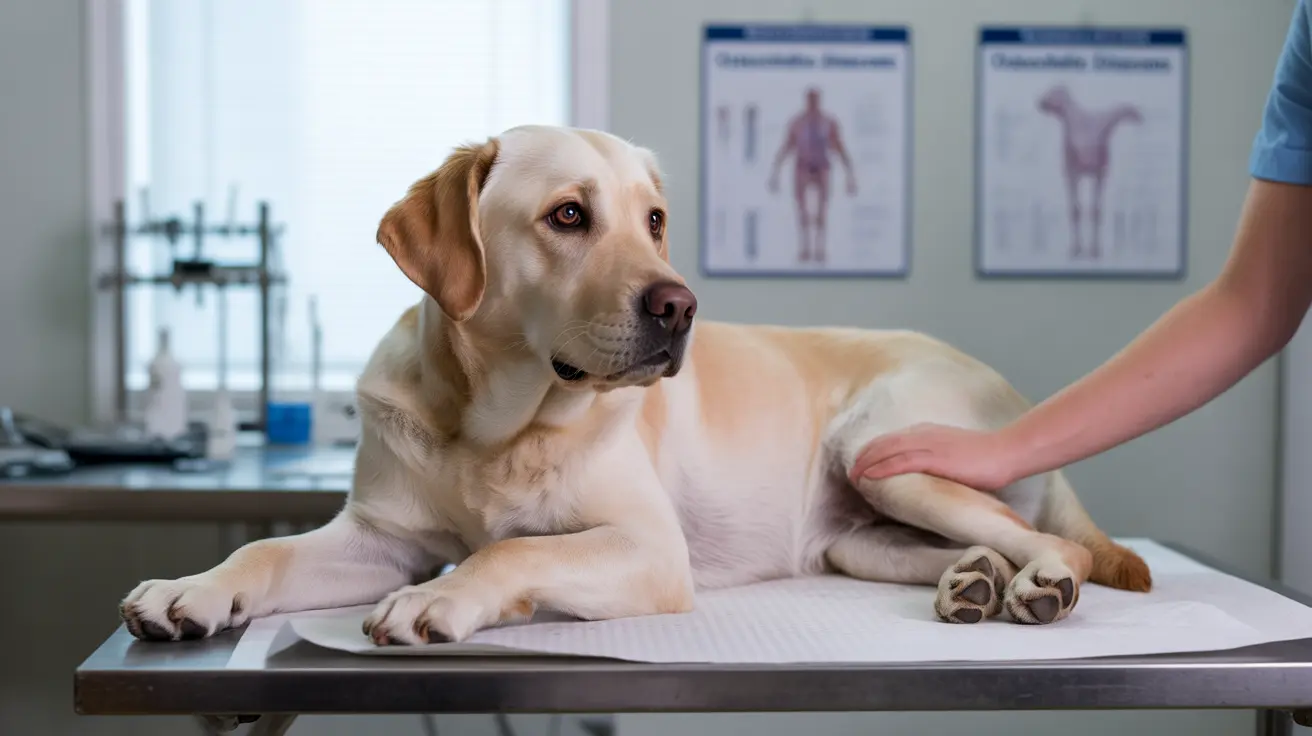What is Osteochondritis Dissecans?
Osteochondritis dissecans occurs when the normal process of cartilage turning into bone (ossification) is disrupted in growing dogs. This disruption leads to abnormally thick cartilage that can crack and form loose flaps within the joint. These cartilage flaps can break free, creating what veterinarians call "joint mice" - loose fragments floating in the joint space.
The condition most commonly affects the shoulder joint, but can also develop in the elbow, knee (stifle), or ankle (hock) joints. Many dogs experience the condition bilaterally, meaning it affects both sides of the body.
Common Signs and Symptoms
Recognizing the early signs of OCD can lead to better treatment outcomes. Watch for these key indicators:
- Lameness or limping, especially after exercise
- Reluctance to move or play
- Visible pain when moving certain joints
- Holding the affected limb away from the body
- Muscle atrophy in advanced cases
- Swelling around the affected joint
Risk Factors and Predisposed Breeds
Several factors increase a dog's risk of developing OCD:
- Rapid growth rate
- Large or giant breed genetics
- Male gender (slightly higher risk)
- Excessive dietary calcium
- Overfeeding during puppyhood
- Genetic predisposition
Breeds most commonly affected include:
- Labrador Retrievers
- Golden Retrievers
- German Shepherds
- Great Danes
- Bernese Mountain Dogs
- Rottweilers
Diagnosis and Treatment Options
Veterinarians diagnose OCD through a combination of physical examination, gait analysis, and imaging studies. X-rays are typically the first diagnostic tool, though advanced imaging like MRI or CT scans may be necessary in complex cases.
Conservative Management
For mild cases or very young dogs, conservative treatment may include:
- Strict rest and activity restriction
- Anti-inflammatory medications
- Weight management
- Joint supplements
- Physical therapy exercises
Surgical Intervention
Surgery is often necessary, especially in severe cases or when conservative management fails. The most common surgical approach involves:
- Removal of loose cartilage fragments
- Cleaning of the affected joint surface
- Stimulation of new cartilage growth
- Minimally invasive arthroscopic techniques when possible
Recovery and Long-term Outlook
Most dogs recover well with appropriate treatment, though the recovery period can span several months. Success rates are highest when the condition is caught early and treated appropriately. Long-term management often includes weight control, appropriate exercise, and joint supplements.
Frequently Asked Questions
What are the most common symptoms of OCD (osteochondritis dissecans) in dogs?
The most common symptoms include limping, especially after exercise, reluctance to move, visible pain when using certain joints, and decreased activity levels. Some dogs may hold their affected limb away from their body or show signs of discomfort when the joint is touched.
How is osteochondritis dissecans (OCD) diagnosed and treated in dogs?
Diagnosis typically involves physical examination, X-rays, and sometimes advanced imaging like MRI or CT scans. Treatment options include conservative management (rest, medication, and physical therapy) or surgery, depending on the severity and location of the lesion.
Which dog breeds are most likely to develop OCD in their joints?
Large and giant breeds are most susceptible, particularly Labrador Retrievers, Golden Retrievers, German Shepherds, Great Danes, Bernese Mountain Dogs, and Rottweilers. Males are slightly more likely to develop the condition than females.
Can osteochondritis dissecans in dogs be managed without surgery?
In some mild cases, especially in very young dogs with small lesions, conservative management may be successful. However, many cases require surgical intervention for the best outcome, particularly if the dog doesn't respond to conservative treatment within a few weeks.
What should I expect during my dog's recovery after OCD surgery?
Recovery typically takes 4-8 weeks and includes restricted activity, physical therapy exercises, and pain management. Most dogs return to normal activity gradually, with full recovery possible within 3-4 months post-surgery.






